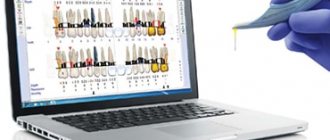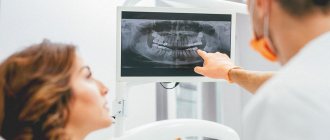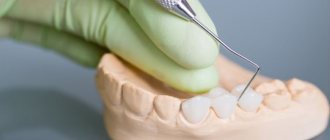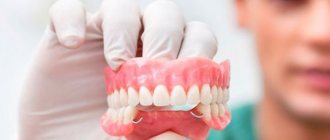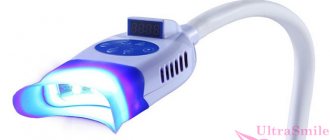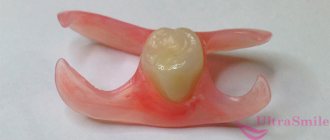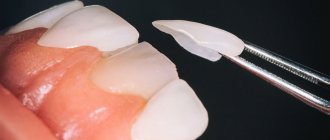Dr. Kizim
>
Articles
>
CAD/CAM technologies in dentistry - a guarantee of accurate and fast results
The idea of using CAD/CAM technology in dentistry appeared in 1971. The first models were bulky and inconvenient to use; the scanners produced significant image distortions, which did not allow the creation of high-quality products. With the improvement of software, the production of prostheses using CAD/CAM technology is gradually replacing classical orthopedic methods.
Stages of CAD/CAM technology in dentistry
The abbreviation CAD/CAM is the first letters of English expressions, which when translated into Russian mean: computer-aided design systems/computer-aided manufacturing systems.
Restoring the integrity of the dentition using CAD/CAM technology consists of three stages:
- Computer diagnostics using a scanner.
- Modeling in 3D format.
- Manufacturing and installation of a prosthesis.
Scanning the oral cavity - creating digital impressions of the dental system and transferring information to a computer. The procedure is performed in two versions: scanning the patient’s mouth directly or a plaster model. The sensitivity of the scanner determines the similarity of the parameters of the virtual model to the dimensions of the real one, which is the main factor in the accuracy of the fit of the finished structure.
Three-dimensional (3D) modeling of orthopedic structures . The resulting image is processed by a computer program that independently generates virtual models of the future prosthesis (inlays, veneers, crowns, bridges). The capabilities of the three-dimensional editor allow the orthopedic doctor to adjust the shape, curvature, wall thickness, and relief of the product. When all corrections are completed, the panoramic computer model proceeds to the next stage - milling.
Milling . The virtual model with the finished design is sent to the system department of the milling machine. The metal block is automatically turned with special cutters in a sequence specified by the computer. The result is a metal product or a solid frame for the crown, which is then filled with ceramic mass and baked in a high-temperature oven.
Grinding, polishing . After firing, the finished product is ground and the surface is finished polished.
Using CAD/CAM technology, the full cycle of prosthesis production is carried out - from a 3D panoramic model to the finished product.
In Russia, the systems Cerec, Organical, Catana and others are used.
Content:
- CAD
- CAM
- What can be made using innovative computer programs
- Computerized prosthetics - main stages
- Advantages of CAD/KAM
Thanks to innovative technologies and the latest computer equipment, dentists today install dentures for their patients that are almost impossible to distinguish from natural teeth.
They exactly match the color of the client’s natural enamel shade and fit perfectly into the dentition. When describing the technologies involved in the creation of dental structures of the 21st century, emphasis should be placed on CAD/CAM systems. Let's look at what they are and how far the dental industry has come since their introduction.
What orthopedic structures are manufactured using the CAD/CAM system?
Unique computer technology allows you to create:
- Crowns made of zirconium and solid ceramics.
- Veneers, inlays.
- Telescopic crowns for clasp dentures.
- Individual abutments.
- Bridge structures.
- Temporary crowns that must be installed in a short time.
- Surgical templates for dental implantation.
The range of use of this technology is constantly expanding, making this section of orthopedics the most promising.
Only with the use of a CAD/CAM system is it possible to process such high-strength materials as oxide and zirconium dioxide, from which beautiful, durable crowns are made.
Types of manufactured prostheses
The CAD/CAM system in dentistry makes it possible to produce almost all types of dental prosthetics. These include the following:
- Metal-ceramic crowns and bridge implants. This is the most common type of jaw defect replacement. The disadvantage of traditional prosthetics is that it occurs in several stages, taking time and forcing the patient to wait. Using this system, it is possible to reduce the production time for metal ceramics from a week to a day. First, the frame of the future prosthesis is modeled on a computer, then it is covered with ceramic mass using conventional technology.
- Frames of clasp dentures. The difficulty of their manufacture lies in the fact that they often have a very complex design, which is difficult to manufacture in a dental laboratory. Often during the metal casting process, deformations in the shape of the structure occur, which negatively affect its quality. The production of the frame using the CAD/CAM system ensures its high accuracy even in complex clinical cases.
- Telescopic crowns for clasp dentures. They are attached to a metal frame and secure the prosthesis to the teeth in the jaw. Kad Cam helps you virtually plan the location of the crowns on the prosthesis frame and manufacture them with maximum accuracy.
- Fillings, inlays and veneers made of ceramic or porcelain. The computer allows you to accurately predict the type of restoration and select the required shade and color. After the planning stage, a product of the required shape is turned from a ceramic block on a milling machine.
- Inlays made of cobalt-chrome alloy, zirconium dioxide. If the inlay is intended for multi-rooted teeth, using CAD/CAM it is possible to design the location of the pins in each channel, which will improve its retention in the tooth.
- Abutments for titanium implants. They are a head that fits onto an implant installed in the jaw. In complex clinical cases, when it is necessary to use several titanium rods to support a bridge, CAD/CAM will help to accurately calculate the distance between them and produce an individual abutment for each implant.
Metal ceramics
Veneer
Abutment
Tab
Advantages of CAD/CAM technology in dentistry
- High precision in the manufacture of orthopedic structures, which cannot be achieved with other technologies. In the classic version, at any stage of prosthesis manufacturing (taking impressions, casting plaster models, manually creating a frame), small errors inevitably arise, which together lead to inaccuracies in the finished prosthesis, which often requires modification. Dimensional deviation with the CAD/CAM system is 3–5 times lower than with the classical one.
- Orthopedic products using digital technology are characterized by increased strength and durability.
- The process of manufacturing various types of prostheses is fully automated, which eliminates errors caused by the human factor.
- To manufacture prostheses using the CAD/CAM system, it is possible to use various materials: alloys of cobalt and chromium, zirconium dioxide, ceramics, composite materials, since the computer contains several process control programs depending on the substance used.
- The dentures so accurately replicate the anatomical structure of the teeth that the patient does not experience discomfort after installation of the structure, and there is no bleeding, pain or injury to the gums.
- Due to the absence of intermediate stages in the work (taking impressions, casting prosthetic models), the total duration of prosthetics using technology is reduced from 10–14 days to several hours and makes it possible to install the design in 1–2 visits to the doctor.
- The patient can see an image of his future prosthesis on the computer screen, discuss possible options with the dentist, and, if necessary, make adjustments to the final project.
- The patient does not experience any discomfort associated with taking impressions using plaster. This is especially true for people with a pronounced gag reflex.
- Prosthetics using the CAD/CAM system gives a predictable, highly accurate result, taking into account the individual characteristics of the patient.
Computerized prosthetics - main stages
If you plan to use the described computer capabilities, then the prosthetics process looks like this:
Carrying out sanitation of the patient's oral cavity. The doctor removes dental plaque, treats existing dental diseases, cleans the canals of the tooth to be restored, and fills them.- Obtaining a digital model of the jaw using an intraoral scanner. It can also be created by scanning ordinary casts made of plaster. However, if a person has a high gag reflex, the impression taking procedure causes serious discomfort. In this case, it is better to obtain data using a compact sensor placed directly in the oral cavity. In addition, it completely eliminates the occurrence of errors and inaccuracies that often occur when working with plaster.
- Modeling a prosthesis in a computer program. The program shows the product from all sides, even in cross-section.
- Sending a file with an approved model to the unit that controls the router. At this stage, the element required by the client is cut out on a special machine. If work is carried out with zirconium dioxide, then the resulting product is sent for agglomeration (sintering) so that it becomes as strong as possible.
The finished product is handed over to the doctor. It is installed on a previously prepared base. Reliable fixation is achieved through the application of heavy-duty dental cement.
Where is the best place to make prosthetics using CAD/CAM technology?
High-quality prosthetics is not only a snow-white smile, but also a way to restore the main function of teeth - mechanical processing of food. To do this, it is necessary that the dentures not only perform a decorative role, but also withstand heavy chewing loads. It is the CAD/CAM computer technology that guarantees the patient maximum comfort during prosthetics, minimal completion time, strength and long-term service of the prostheses.
Not all dental clinics can offer orthopedic treatment of such a high level.
Dr. Kizim's center provides its patients with the most modern systems for computer modeling and manufacturing, which allow them to create highly accurate and aesthetic prosthetics in the shortest possible time. Doctors at the dental center use new technologies during orthodontic treatment and obtain impeccable results.
If you dream of beautiful and healthy teeth, but don’t have time to spend weeks visiting offices, contact Dr. Kizim’s clinic
Dental treatment and prosthetics at the Dental Brothers clinic
The Dental Brothers digital dentistry clinic invites you to diagnose, treat and restore teeth using high technology. We guarantee that you will solve any problem quickly and efficiently: during one visit, modern veneering is performed, inlays for restoration are installed, permanent crowns are ground and fixed. More information about the capabilities of CAD-CAM technology can be obtained directly at an appointment with orthopedists at our clinic. You can make an appointment for a consultation by phone or using a special form on the Dental Brothers website.
Advantages and disadvantages
The CAD/CAM metal-ceramic crown has the following advantages:
- accurate production of a 3D model of the future structure;
- use of software;
- excellent operational and aesthetic characteristics;
- durability, long service life;
- products made using this technology are free from such disadvantages as shrinkage, overheating, deformation, and pigmentation.
There are practically no disadvantages, the only relative disadvantages are the higher price. But the service life of the product is significant - 20 years or more. Therefore, the cost is completely justified, since the quality, aesthetics and long service life fully justify it. There are also high demands on the qualifications of the dentist and technician, and the ability to work with special software.
Advantages of CAD/KAM
These technologies are in demand in the field of dental prosthetics, as they are characterized by many advantages:
- create a frame of the desired shape, the correct color;
- do not make mistakes;
- reduce the production time of complex dental devices;
- do not cause discomfort in the patient (allows you to avoid trays for taking impressions);
- exclude the influence of the human factor;
- are in no way associated with risk or injury;
- guarantee a perfect fit of the manufactured device.
With them, even before the start of treatment, the doctor knows exactly what result will be achieved upon completion. This is very important, since if a crown is made that does not fit well, the patient will then constantly experience discomfort. An unsuitable denture can irritate tissues and contribute to the development of gingivitis. If it exactly follows the outline of the missing tooth, such difficulties are eliminated.
